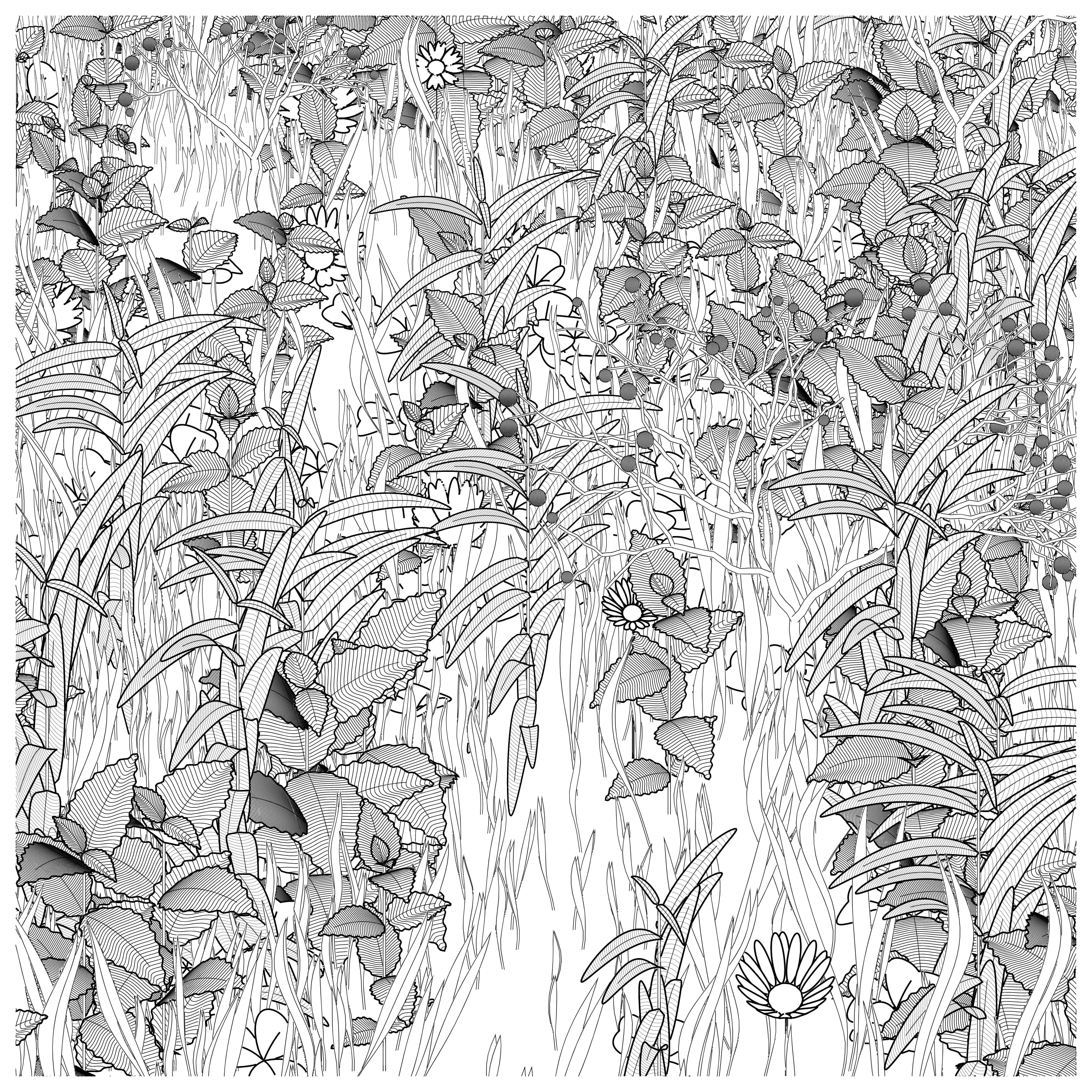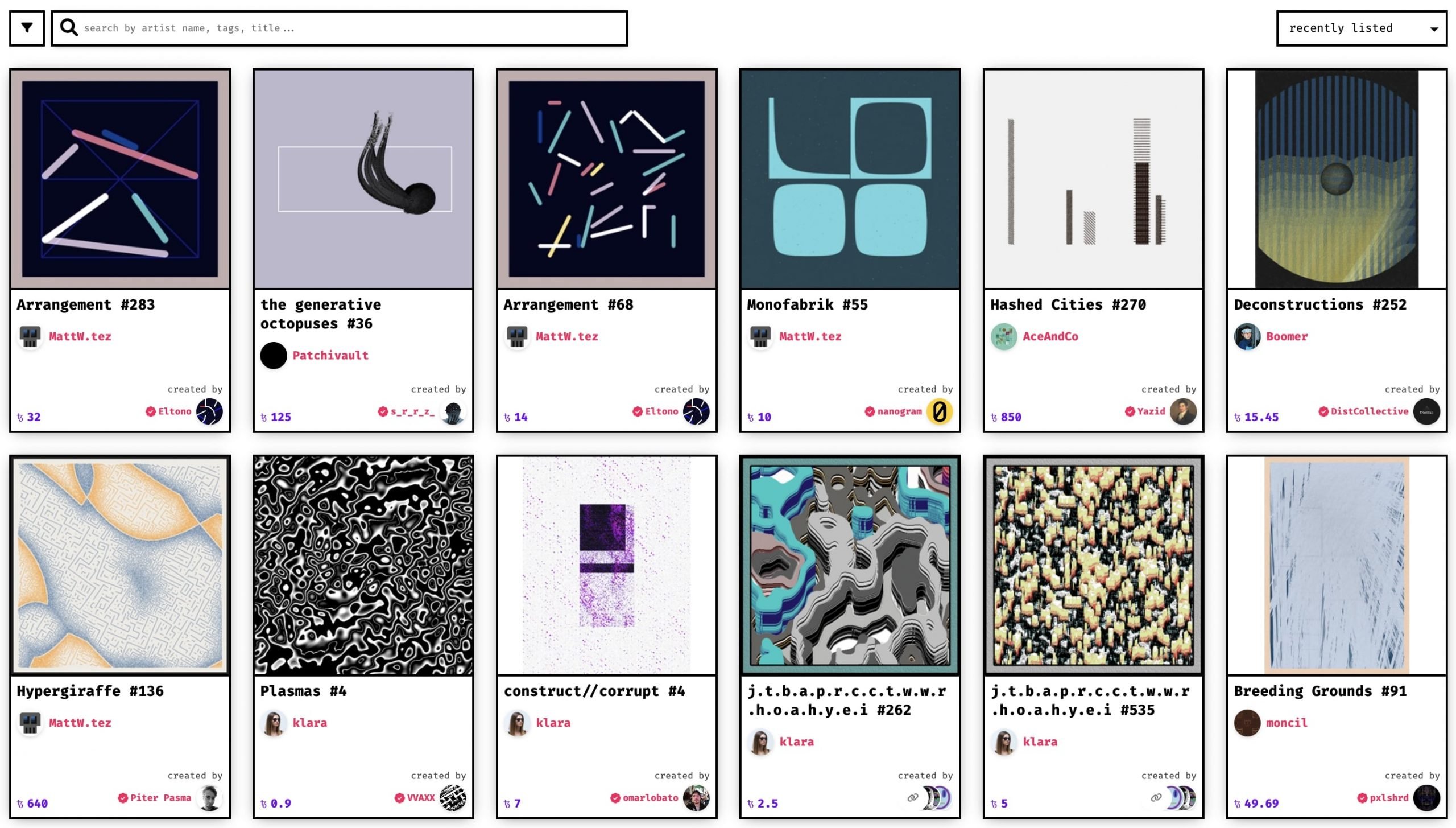Fans of generative art have long been flocking to the generative art platform, Art Blocks. However, Ethereum’s increasing transaction fees and energy consumption are deterring many users. This is where fxhash comes into the picture. Built on the energy-efficient Tezos blockchain, fxhash is an NFT marketplace for generative tokens.
What is fxhash, the Tezos NFT Marketplace?
According to its website, “fxhash is an open platform to create and collect generative NFTs on the tezos blockchain”. Since fxhash is an open platform, there is no top-down curation. In other words, artists and creators can freely upload their generative art NFTs on the platform.
Generative artist, ciphrd launched the Tezos NFT marketplace in November 2021. In just over a month, the platform produced 170,000 mints—no small feat for a new NFT marketplace.
To understand fxhash’s significance, we first need to understand what generative art is.
What is generative art?
Put simply, generative art is art generated by an autonomous system, usually a computer code. While this art form has been around since the early 1960s, generative artists started uploading the codes to various blockchains in 2021. The result? Every time a collector mints an NFT, the code generates a completely unique artwork.
Essentially, artists create a set of rules which determines the final output. These rules can be the shapes, colours, or patterns involved, the number of iterations, and so on. Then, the computer follows these rules to produce a completely unique piece of art. Here’s the best part—even the artist will not know the actual outcome!

How Does fxhash Work?
On fxhash, artists first upload their project and mint it as a Generative Token after setting certain parameters. For instance, they have to decide on the edition size, which is usually between 100 to 10,000. The platform then stores the project in the IPFS network and later, on the Tezos blockchain.
When the artists open their project to collectors, anyone will be able to mint completely unique iterations from it. Each mint of a Generative Token creates a “random hash” that is injected into the artist’s project. The platform will then store these iterations as NFTs on the Tezos blockchain. In this way, each token is “independent, self-contained, and immutable”.
Fxhash’s primary mission is to create an inclusive platform and leave control to the artists. As the project explained, it aims to “provide a framework so that generative artists can have a space in which they can mint their pieces meant to be generative.”
Top NFT Collections on fxhash
Currently, Garden, Monoliths by Zancan is the highest-grossing NFT collection on fxhash, with a 12,500 ꜩ floor. So far, it has generated 352,000 ꜩ in all-time volume. The collection features a beautiful plethora of various elements in nature.
Next on the list is RGB Elementary Cellular Automaton by Ciphrd. As the second-ever project minted on the platform, that too by fxhash’s developer, the NFTs in the collection are highly sought after. Dragons by williamapan, (kinder)Garden, Monuments by Yazid and zancan, and SMOLSKULL by markknol are some of the other blue-chip projects on the Tezos NFT marketplace.
Are you tired of missing important NFT drops?
Just check out our NFT Calendar!
Receive the biggest NFT news of the day & recommendations in our Daily newsletter.
All investment/financial opinions expressed by NFTevening.com are not recommendations.
This article is educational material.
As always, make your own research prior to making any kind of investment.




